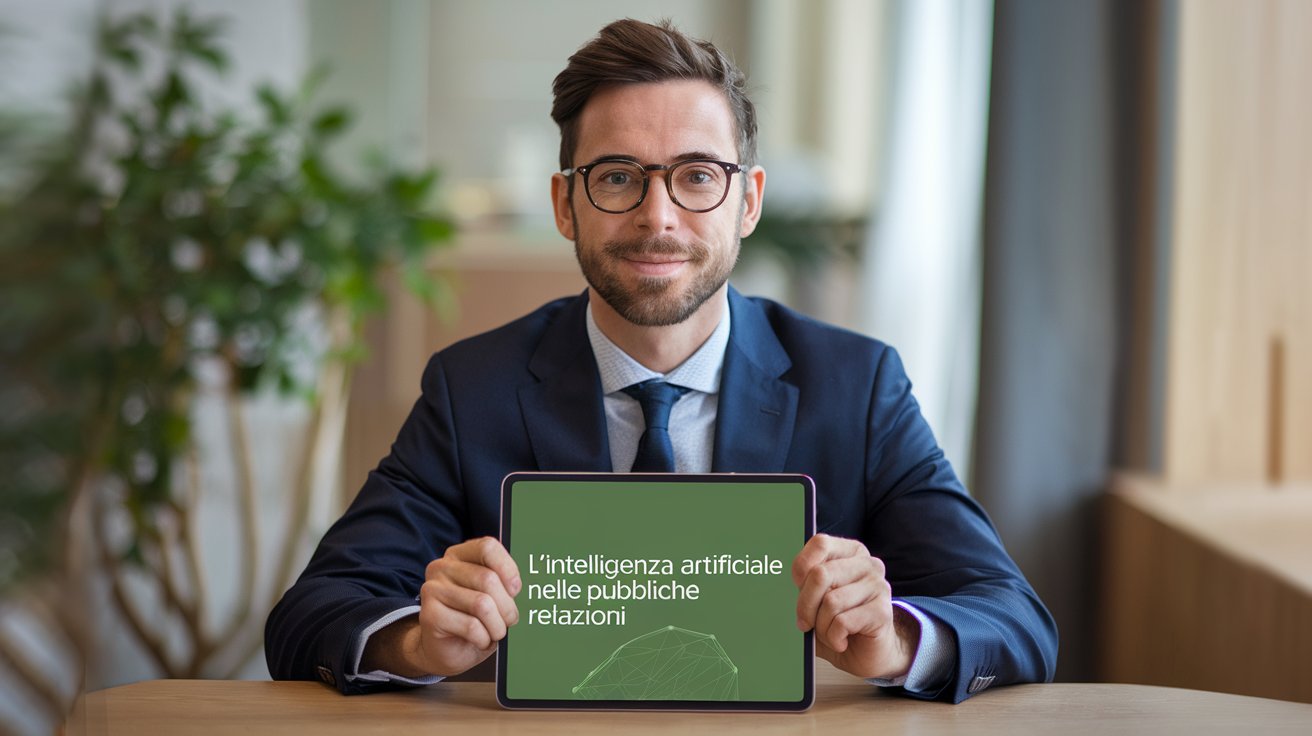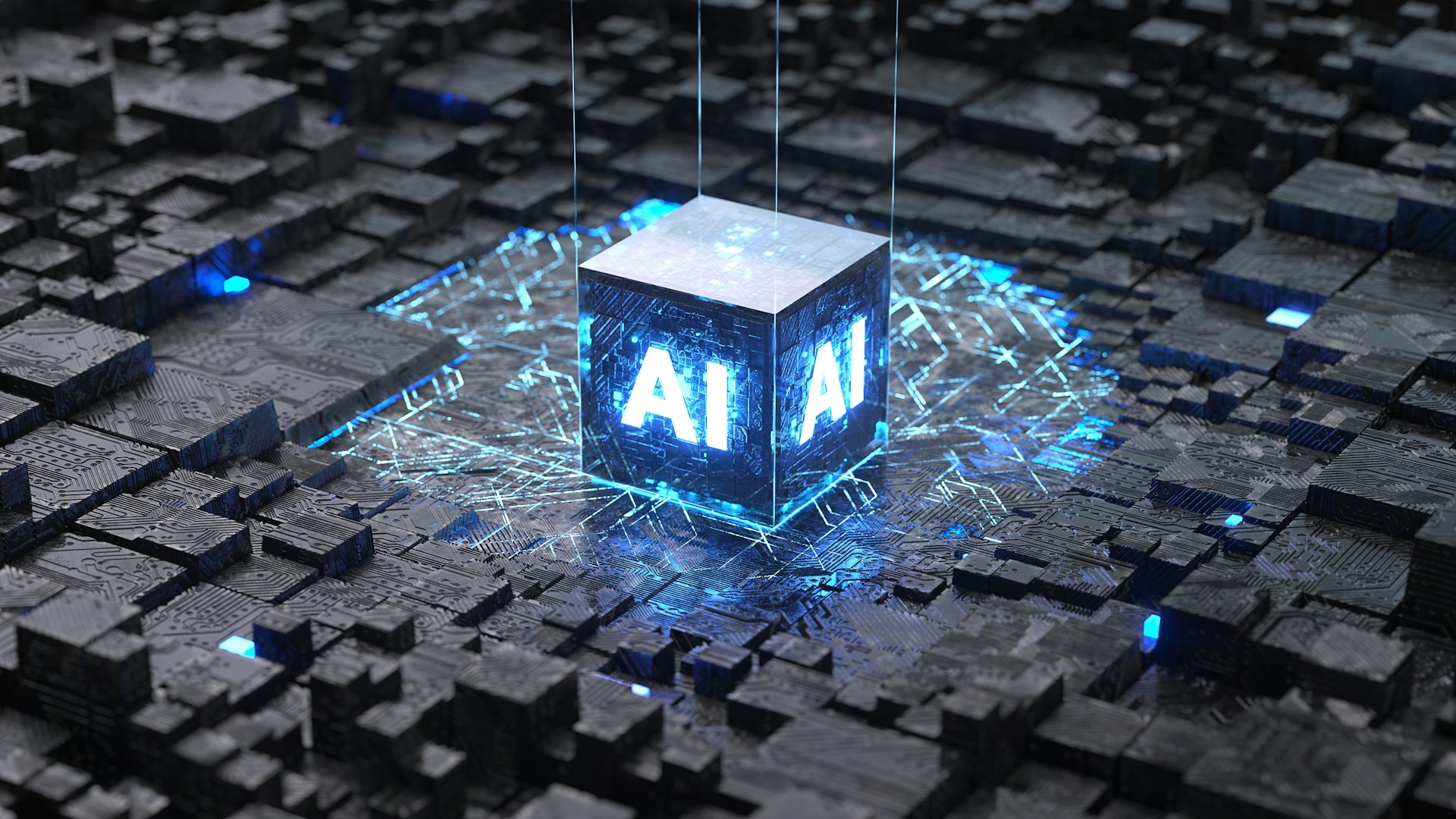Artificial intelligence is revolutionizing the public relations sector. Find out how to adapt and thrive in this new technological panorama, from the emerging opportunities to the challenges to face.
Summary
The advent ofartificial intelligence(Ia) is quickly transforming the panorama of public relations, offering new opportunities and challenges for professionals in the sector. This technological revolution is redefining traditional roles and creating new professional figures, requesting rapid adaptation and a mentality open to innovation. In this article, we will explore how IA is shaping the future of public relations, analyzing the new skills required and emerging opportunities. We will also examine the ethical and practical challenges that professionals will have to face in this new technological era.
The evolution of the role of the public relations professional
The role ofPublic Relations ProfessionalIt is undergoing a profound transformation thanks to artificial intelligence. What was once a work based mainly on human relationships and creativity, now requires a combination of traditional and technological skills.
From communicator to Digital Orchestra Director
Public relations professionals are becoming more and more similar to orchestra directors, coordinating a set of tools and technologies based on the AI to optimize their communication strategies. This new role requires:
- An in -depth understanding of the skills and limits of the AI
- The ability to integrate IA tools into existing communication strategies
- The ability to interpret and act on the data generated by the AI
The importance of adapting and continuous learning
In un settore in rapida evoluzione, l’adattabilità è diventata una competenza chiave. I professionisti delle pubbliche relazioni devono:
- Mantenersi costantemente aggiornati sulle ultime innovazioni nel campo dell’IA
- Essere pronti a sperimentare nuove tecnologie e approcci
- Sviluppare una mentalità flessibile e orientata all’apprendimento continuo
The new professional figures in the AI era
L’integrazione dell’IA nelle pubbliche relazioni sta dando vita a nuove figure professionali specializzate. Queste nuove posizioni richiedono una combinazione unica di competenze tecniche e comunicative.
The owner of Ia
The proprietario di IA è responsabile dello sviluppo e della gestione di modelli di IA personalizzati per le esigenze specifiche di un’organizzazione o di un settore. Questo ruolo richiede:
- Una profonda conoscenza del settore delle pubbliche relazioni
- Competenze tecniche per sviluppare e addestrare modelli di IA
- La capacità di identificare opportunità di applicazione dell’IA nelle strategie di comunicazione
The architect of models
The architect of models si concentra sul miglioramento e l’ottimizzazione dei modelli di IA esistenti per supportare i processi di pubbliche relazioni. Le responsabilità includono:
- Analisi e perfezionamento dei modelli di IA per migliorarne le prestazioni
- Integrazione di nuove funzionalità nei modelli esistenti
- Collaboration with the communication teams to ensure that the models meet practical needs
The engineer of agents IA
The engineer of agents IAIt develops automated systems that can perform specific tasks in public relations. This role requires:
- Software programming and development skills
- In -depth understanding of public relations processes
- Ability to translate communication needs into technological solutions
The technician Ia
The technician IaIt acts as a bridge between the developers of IA and public relations professionals. His responsibilities include:
- Monitoring and maintenance of IA systems
- Training of personnel on the use of IA tools
- Problem resolution and optimization of systems performance
The data trainer
The data trainerHe plays a crucial role in ensuring that the IA models are trained on accurate and impartial data. This role requires:
- Skills in Data Science and data analysis
- In -depth knowledge of the ethical issues related to the AI
- Ability to identify and correct bias in the data sets

Practical applications of AI in public relations
Artificial intelligence is finding numerous practical applications in the field of public relations, automating processes and providing precious insights.
Media monitoring and sentiment analysis
The IA is revolutionizing the way in which public relations professionals monitor and analyze media coverage:
- Automatic scan of news articles and social media posts
- Analysis of the sentiment in real-time
- Identification of emerging tendencies and potential reputation problems
Forecast and management of crises
The predictive models based on the AI are becoming essential tools for the management of crises:
- Early identification of potential crisis situations
- Automated suggestions for response strategies
- Simulations of scenarios to improve the preparation for crises
Generation of content and optimization
The IA is assisting professionals in the creation and optimization of content:
- Generation of drafts of press releases and social media posts
- Suggestions for the SEO optimization of content
- Customization of messages for several public targets
Automation of administrative activities
Many administrative activities in public relations can be automated thanks to the AI:
- Creation and updating of media contact lists
- Planning and management of editorial calendars
- Automatic generation of reports and analysis
Ethical challenges and practices in the use of AI in public relations
The adoption of the AI in public relations raises important ethical and practical issues that professionals must face.
Transparency and authenticity
The use of the AI in the creation of content and in the interaction with the public raises transparency issues:
- How to communicate the use of AI in public relations activities?
- How to maintain authenticity in the communications assisted by the AI?
- What are the ethical limits in the use of the AI for the creation of content?
Privacy and data protection
IA requires large quantities of data, raising privacy concerns:
- How to guarantee compliance with data protection regulations?
- How to balance the personalization of messages with respect for privacy?
- What are the ethical responsibilities in the collection and use of data?
Bias and fairness
IA models can perpetuate or amplify existing bias:
- How to identify and mitigate the bias in IA models?
- How to ensure that the IA is fair and inclusive in its applications?
- What are the ethical implications of the use of IA in communication decisions?
Technological dependence and human skills
The increase in the use of AI raises concerns about the potential loss of human skills:
- How to balance the efficiency of the AI with the need for human skills?
- What traditional skills of public relations risk being lost?
- How to ensure that the IA remains a support tool and not a substitute for human judgment?
Strategies to successfully integrate the IA into public relations
To make the most of the potential of the AI, public relations professionals must adopt a strategic approach to its integration.
Evaluation of needs and opportunities
Before implementing IA solutions, it is essential:
- Identify the areas where the IA can bring the greater value
- Evaluate the technological maturity of the organization
- Establish clear objectives for the adoption of the AI
Training and development of skills
Investing in staff training is crucial for the success of the integration of the AI:
- Organize workshops ecoursestraining on the AI
- Encourage continuous learning and updating skills
- Create interdisciplinary teams that combine communication and technology experts
Gradual implementation and test
A gradual approach to the adoption of AI can help manage risks and optimize results:
- Start with pilot projects in specific areas
- Carefully monitor the results and collect feedback
- Iterate and continuously improve IA solutions
Collaboration with IA experts
Collaboration with IA experts can accelerate adoption and improve effectiveness:
- Establish partnerships with technological companies specialized in IA
- Assume or consult IA experts to guide the implementation
- Participate in community and forums dedicated to the AI in public relations

The future of public relations in the AI era
Looking to the future, the IA will continue to transform the public relations sector into significant ways.
Advanced customization
The IA will allow an increasingly sophisticated customization of communications:
- Tailor -made messages based on behavioral analysis in real-time
- Forecast of public preferences and reactions
- Creation of highly interactive and personalized communication experiences
Integration with other emerging technologies
The IA will integrate with other emerging technologies to create new possibilities:
- Augmented and virtual reality for immersive storytelling experiences
- Internet of things to collect data in real-time and improve the understanding of the public
- Blockchain to guarantee transparency and authenticity in communications
Evolution of professional roles
The roles in the public relations sector will continue to evolve:
- Greater emphasis on the skills of data analysis and management of the AI
- Emerge of new specializations related to the ethics of the AI and the governance of data
- Growing importance of soft skills such as creativity, empathy and critical thinking
Ethical challenges and regulations
The growing use of the AI will raise new ethical challenges and regulatory challenges:
- Need for specific ethical guidelines for the use of AI in public relations
- Potential regulation of the use of AI in public communication
- Continuous debate on balance between technological innovation and human values
Conclusion: embrace change with awareness
Artificial intelligence is redefining the panorama of public relations, offering unprecedented opportunities but also significant challenges. To thrive in this new era, professionals must embrace change with an open and critical mentality.
It is essential to remain updated on the latest innovations, develop new skills and adapt to emerging roles. At the same time, it is crucial to maintain a strong ethical sense and a profound understanding of the value of human relationships in our sector.
The IA will not replace public relations professionals, but will expand their skills. The future belongs to those who will expertly integrate artificial intelligence with unique human skills, creating more effective, personalized and impacting communication strategies than ever.
Navigating this new frontier will require courage, creativity and a constant commitment to learning. But for those who accept the challenge, the possibilities are infinite. The future of public relations is here, and is exciting, complex and full of opportunities. It is up to us to shape it in the right way.











